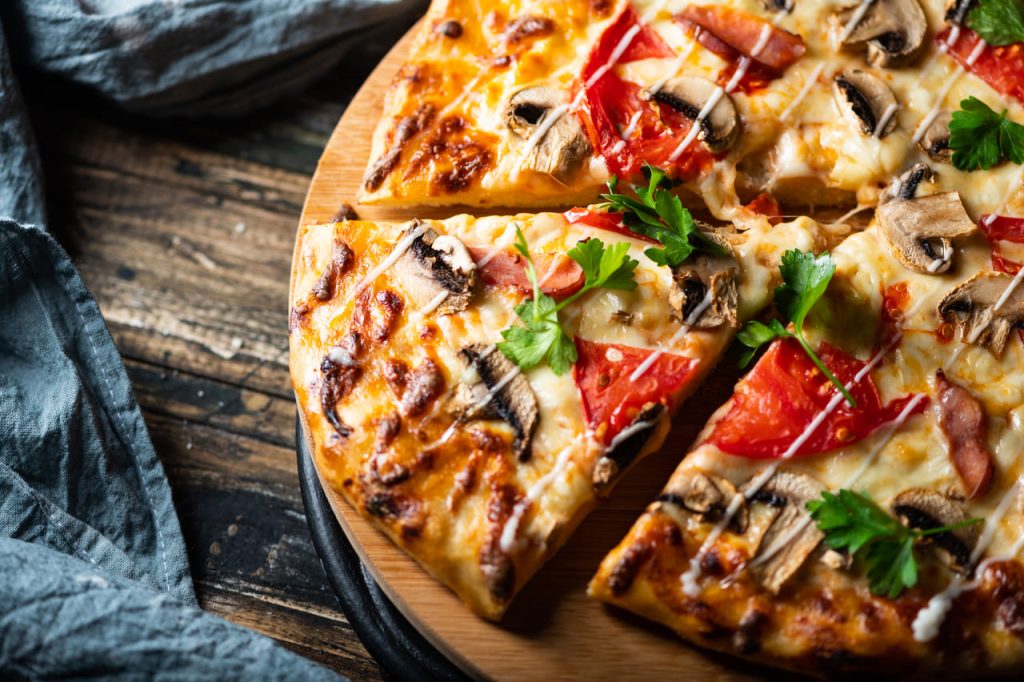There are pros and cons of pizza. First, it’s important to remember that pizza has a lot of empty calories. So avoid picking up that second slice. It’s also a good idea to choose low-fat cheese. Second, if you’re concerned about cholesterol, use olive oil, as it helps control your blood cholesterol.
Low-fat cheese is a healthier option
Cheese is a good protein source and a great way to satisfy your daily protein requirements. This food is a complete protein source with all the amino acids your body needs. About 15 grams of protein can be found in one slice of cheese, making it an excellent way to meet your daily protein requirements all at once. In addition to providing energy, cheese is an excellent source of vitamins C and A. In addition, a few slices a day can help increase your daily fiber intake, which is essential for your health.
Wide varieties of cheese are available in the low-fat form. You can select from fat-free, part-skim, and whole-milk varieties. You can also choose from goat cheese, which is much lower in fat than cow’s milk cheese. Low-fat cheese is a great way to reduce the number of calories and fat on the best pizza in Breckenridge without sacrificing the taste or flavor.
Tomato sauce is high in Vitamin C
Tomato sauce is rich in Vitamin C and other nutrients, which can help your body fight chronic diseases and improve your health. Vitamin C helps lower your risk of heart disease, boosts your immunity, and prevents iron deficiency. It can also help improve the health of your eyes and skin. It also contains essential minerals like potassium and manganese, which help build stronger bones and prevent muscle cramps.
Tomato sauce is also high in other vitamins, such as folate and vitamin A. It also has more iron and copper than regular tomato sauce and is low in cholesterol and sodium. It also contains less fat and is versatile, allowing you to make various dishes that will satisfy your taste buds.
Mozzarella cheese is a good source of calcium
Cheese has numerous health benefits. Not only is it low in saturated fat, but mozzarella is also gluten-free. Cheese is also rich in biotin, an essential vitamin for healthy skin and hair. High intake of saturated fat can increase the risk of cardiovascular disease. However, mozzarella only contains a small percentage of saturated fat, considered healthy.
Another advantage of eating mozzarella is its high calcium content. For example, 30 grams of mozzarella can provide about 18% of a person’s daily calcium requirements. Calcium supports bone structure and protects tooth enamel. Additionally, mozzarella is a good source of phosphorus, which helps the body use calcium. It also contains plenty of protein essential for building muscle tissue. Mozzarella can be used in various dishes, including pizza toppings, pasta timbales, and even as a sandwich filling.
Olive oil helps maintain cholesterol levels
According to studies, olive oil can increase “good” cholesterol levels while decreasing harmful cholesterol levels. High cholesterol is a significant health concern among adults, and it can lead to heart disease and stroke. Unfortunately, there are no apparent symptoms of high cholesterol. In addition, consuming foods high in saturated fat can increase the level of “bad” cholesterol in the blood. Olive oil can help lower cholesterol levels by lowering LDL cholesterol and raising HDL cholesterol.
Olive oil contains beneficial antioxidants that can lower bad cholesterol while leaving good cholesterol untouched. To maximize its cholesterol-lowering benefits, use extra-virgin olive oil. It has fewer processing steps than other olive oil and is packed with heart-healthy antioxidants.
Lean proteins can be included in other meals or as toppings for pizza
Pizza is a simple method to add additional protein to your diet using lean proteins. Chicken, turkey, and lean beef are all excellent choices. They are also low in fat and contain plenty of omega-3 fatty acids. However, when choosing your meat, try to look for the heart with low sodium content. It will increase the nutritional value of the meat and lower the amount of saturated fat. Using grilled chicken instead of red meat is another healthy option. You can also use soy chunks, paneer, and tofu if you want a vegetarian option. Another option is tinned tuna. It is a high-protein alternative and comes in a variety of flavors.
Another way to include lean proteins in your diet is to use cauliflower crust for pizza. This crust is packed with 9 grams of protein and is excellent for your health. Another excellent technique to increase your dietary protein intake is topping your pizza with cheese and an egg. Also, try adding some broccoli on top of your pizza. This vegetable will change its taste and increase its iron content. It also contains manganese, which helps your body make energy from your food.
Processed pizzas have more hazardous components
The ingredients in processed pizzas are often more dangerous than those found in homemade varieties. They contain preservatives, dyes, and unhealthy fats and should be avoided if possible. It is recommended that you opt for frozen pizza instead of pizzeria-style varieties and look for the labels of other foods that are less processed. In addition, most pizzas contain refined wheat flour, which is low in fiber and linked to weight gain. They are also high in saturated fat and filled with calorie-dense toppings.
Moreover, most processed pizzas contain BPA, a chemical that leaches from cans and transfers into food. This chemical is linked to numerous health problems, including cancer and reproductive problems.

